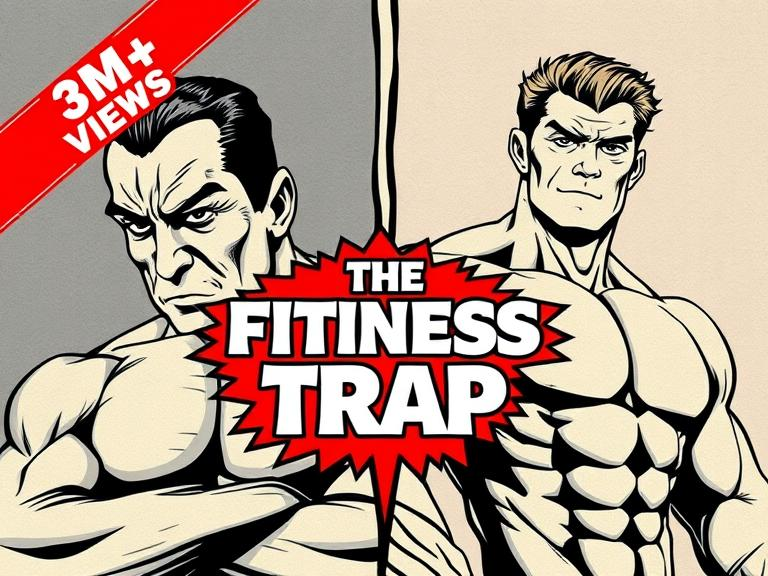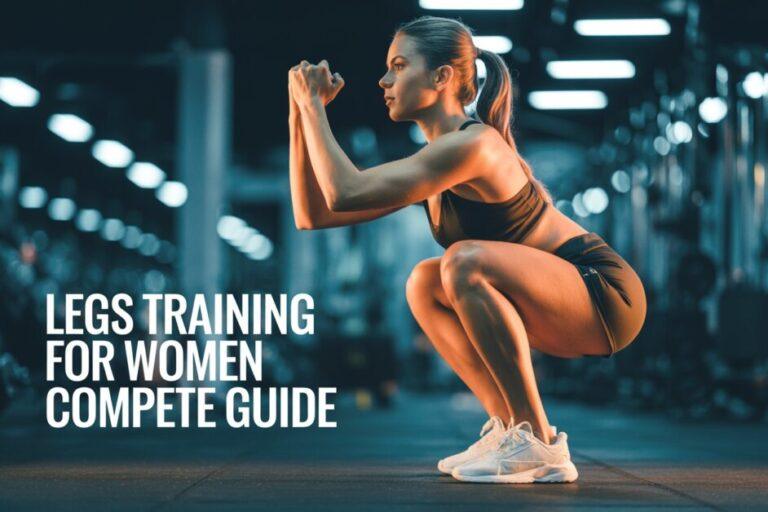The Fitness Trap Exposed: 17 Surprising Truths Every Gym-Goer Must Know
Have you ever felt like no matter how much you train or how strict your diet is, you’re still not “fit enough”?
Welcome to The Fitness Trap. This psychological and cultural snare lures well-intentioned individuals into cycles of burnout, guilt, and unrealistic body ideals—all in the name of “health.” But what if you’ve been doing it wrong all along?
Let’s pull back the curtain on this deceptive mindset and uncover a better way forward.
What is The Fitness Trap?
Definition and Psychological Impact
The Fitness Trap is the mental and emotional pitfall where fitness becomes an obsessive pursuit of perfection, instead of a tool for health and happiness. You may be going to the gym daily, tracking every calorie, or mimicking Instagram workouts—but still feel unsatisfied.
This trap breeds dissatisfaction and burnout, turning a once-enjoyable routine into a source of stress.
Why Most People Don’t Recognize It
It’s sneaky. It disguises itself as “dedication” or “grind culture.” The constant pressure to do more—lift heavier, run faster, eat cleaner—makes it hard to realize when we’ve crossed the line.
The Origins of the Fitness Trap
Societal Expectations and Media Influence
Media has glamorized extreme physiques. Hollywood transformations, six-pack abs, and 30-day shred challenges set unattainable benchmarks, creating a distorted vision of health.
Evolution of Fitness Culture
Fitness wasn’t always this intense. Decades ago, movement meant walking, gardening, or dancing. Today, it’s tied to elite athlete-level intensity, making normal activity seem “not enough.”
Misleading Motivations Behind Working Out
Chasing Aesthetics Over Health
Many begin their fitness journey to improve their appearance, not realizing that aesthetic goals often require sacrifices that aren’t sustainable—or healthy.
Comparing With Influencers and Celebrities
Most online fitness figures have resources, genetics, lighting, and editing on their side. Constant comparison leads to feelings of inadequacy, even when you’re making real progress.
Common Signs You’re Stuck in the Fitness Trap
Working Out But Seeing No Results
You’re clocking in 5–6 sessions a week, yet the scale won’t budge. You’re not alone—this could mean your routine lacks recovery or personalization.
Obsessive Tracking and Overtraining
Constantly monitoring steps, calories, or heart rate can lead to decision fatigue and stress. If rest days make you anxious, it’s time to reassess.
Ignoring Pain and Fatigue
Many push through injuries thinking “no pain, no gain.” But ignoring your body’s signals is a fast track to burnout—or worse, chronic injury.
The Myth of “More is Better”
Overtraining Syndrome
In fitness, rest is not laziness—it’s a biological necessity. Yet, many fall into the trap of thinking more gym time equals better results. Overtraining syndrome is real, and it leads to insomnia, hormonal imbalances, reduced immunity, and even depression.
Importance of Rest and Recovery
Rest days repair muscles, rebalance your nervous system, and prevent injuries. Sleep, hydration, and nutrition all play major roles in optimizing your performance.
The Diet Dilemma
Obsession with Clean Eating
“Clean eating” sounds healthy but can evolve into orthorexia—a harmful obsession with only eating foods deemed pure or natural. This mindset demonizes entire food groups and creates unnecessary fear around eating.
The Dangers of Extreme Calorie Deficits
Drastically cutting calories may lead to rapid weight loss—but it also slows your metabolism, reduces muscle mass, and causes fatigue. Long term, it becomes harder to maintain results.
Mental Health & The Fitness Trap
Anxiety and Body Dysmorphia
Fitness obsession can mask deeper insecurities. Body dysmorphic disorder (BDD) often goes unnoticed in gym culture. The constant drive for visible abs or lean legs can worsen anxiety and self-esteem.
How Perfectionism Plays a Role
Perfectionism turns every missed workout into a personal failure. It demands all-or-nothing behavior, which is both exhausting and unsustainable.
Unrealistic Expectations from Fitness Industry
Photoshop and Steroids
Most magazine covers and influencer posts are edited. What you see is often enhanced, posing as reality. Some influencers also rely on performance-enhancing drugs while claiming “natural” results.
Marketing Traps in Supplements and Gear
Shiny gear and fat-burner pills promise overnight success—but the truth is, they’re mostly placebos. Real progress comes from consistency and strategy, not shortcuts.
When Fitness Becomes a Form of Punishment
Guilt-Driven Workouts
Do you ever work out because you “cheated” on your diet or feel bad about missing a day? That’s not motivation—it’s self-punishment, and it creates a toxic relationship with movement.
The Link Between Fitness and Eating Disorders
Excessive exercise often coincides with disordered eating. If your self-worth hinges on how long or hard you train, it’s time to seek balance.
Social Media’s Role in Reinforcing the Trap
Toxic Comparison Culture
Scrolling through “fitspo” content makes it easy to forget that social media is a highlight reel. It amplifies perfection, not reality, leading you to feel like you’re not doing enough.
The Illusion of “Fitspiration”
What seems inspiring often pressures people to look or train a certain way. Real inspiration should motivate health, not shame.
Breaking Free from The Fitness Trap
Reframing Your Fitness Goals
Shift your focus from six-pack abs to functional fitness—like being able to play with your kids or hike a mountain. These goals are more sustainable and fulfilling.
Focusing on Strength, Function, and Well-Being
When fitness is about feeling strong and energized rather than looking a certain way, everything changes. You start enjoying movement again.
Sustainable Approaches to Fitness
Balanced Routines
Mix cardio, strength, and flexibility without overcommitting. A three- to four-day weekly routine can yield great results if done right.
Listening to Your Body
Tired? Rest. Sore? Stretch. Craving something? Eat it. Your body is wiser than any trend.
Incorporating Joyful Movement
Dancing, hiking, swimming—movement doesn’t have to be confined to the gym. Choose activities that spark joy.
Intermittent Fasting and Exercise: A Guide to Maximizing Fat Loss and Muscle Gain
For More Updates
Instagram || YouTube || Facebook




